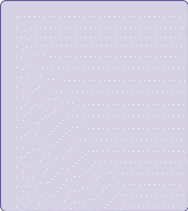NPALS 2022 Residential Care Community Questionnaire
Data Collection for the Residential Care Community and Adult Day Services Center Components of the National Post-acute and Long-term Care Study
Att C-1 RCC provider questionnaire
RCC Provider Questionnaire
OMB: 0920-0943
Form Approved OMB No. 0920-0943 Exp. Date: XX/XX/XXXX


 National
Post-Acute and Long-Term Care Study
National
Post-Acute and Long-Term Care Study

2022 Residential Care Community Questionnaire
The Centers for Disease Control and Prevention conducts the National Post-Acute and Long-Term Care Study (NPALS). Please complete this questionnaire about the residential care community at the location listed below.
Due to the COVID-19 pandemic, we understand services at this residential care community may be temporarily or permanently suspended, reduced, or offered through alternative methods. Although some questions may be difficult to answer at this time, please complete the survey to the best of your ability.
If this residential care community is associated with another residential care community or is part of a facility or campus that offers multiple levels of care, please answer only for the residential care community portion operating at the location listed below.
Please consult records and other staff as needed to answer questions.
If you need assistance or have questions, go to https://www.cdc.gov/nchs/npals/index.htm or call
1-XXX-XXX-XXXX.
Thank you for taking the time to complete this questionnaire.
CASE ID
DIRECTOR’S NAME
FACILITY NAME, LICENSE NUMBER
FACILITY PHYSICAL STREET ADDRESS

CITY, ST, ZIP
Residential care places are known by different names in different states. We refer to all of these places and others like them as residential care communities. Just a few terms used to refer to these places are assisted living, personal care, and adult care homes, facilities, and communities; adult family and board and care homes; adult foster care; homes for the aged; and housing with services establishments.

We would like to keep your name, telephone number, work e-mail address, and job title for possible contact related to participation in current and future NPALS waves. Your contact information will be kept confidential and will not be shared with anyone outside this project team. PLEASE PRINT
-
Your name
First Name

Last Name

Your work telephone number, with extension



—



—




Ext.

Your work e-mail address

Your job title

 Notice
– CDC estimates the average public reporting burden for this
collection of information as 30 minutes per response, including the
time for reviewing instructions, searching existing data/information
sources, gathering and maintaining the data/information needed, and
completing and reviewing the collection of information. An agency
may not conduct or sponsor, and a person is not required to respond
to a collection of information unless it displays a currently valid
OMB control number. Send comments regarding this burden estimate or
any other aspect of this collection of information, including
suggestions for reducing this burden to CDC/ATSDR Information
Collection Review Office, 1600 Clifton Road, MS D-74, Atlanta, GA
30333; ATTN: PRA (0920-0943). Assurance of Confidentiality –
We take your privacy very seriously. All information that relates to
or describes identifiable characteristics of individuals, a
practice, or an establishment will be used only for statistical
purposes. NCHS staff, contractors, and agents will not disclose or
release responses in identifiable form without the consent of the
individual or establishment in accordance with section 308(d) of the
Public Health Service Act (42 U.S.C. 242m(d)) and the Confidential
Information Protection and Statistical Efficiency Act of 2018
(CIPSEA Pub. L. No. 115-435, 132 Stat. 5529 § 302). In
accordance with CIPSEA, every NCHS employee, contractor, and agent
has taken an oath and is subject to a jail term of up to
Notice
– CDC estimates the average public reporting burden for this
collection of information as 30 minutes per response, including the
time for reviewing instructions, searching existing data/information
sources, gathering and maintaining the data/information needed, and
completing and reviewing the collection of information. An agency
may not conduct or sponsor, and a person is not required to respond
to a collection of information unless it displays a currently valid
OMB control number. Send comments regarding this burden estimate or
any other aspect of this collection of information, including
suggestions for reducing this burden to CDC/ATSDR Information
Collection Review Office, 1600 Clifton Road, MS D-74, Atlanta, GA
30333; ATTN: PRA (0920-0943). Assurance of Confidentiality –
We take your privacy very seriously. All information that relates to
or describes identifiable characteristics of individuals, a
practice, or an establishment will be used only for statistical
purposes. NCHS staff, contractors, and agents will not disclose or
release responses in identifiable form without the consent of the
individual or establishment in accordance with section 308(d) of the
Public Health Service Act (42 U.S.C. 242m(d)) and the Confidential
Information Protection and Statistical Efficiency Act of 2018
(CIPSEA Pub. L. No. 115-435, 132 Stat. 5529 § 302). In
accordance with CIPSEA, every NCHS employee, contractor, and agent
has taken an oath and is subject to a jail term of up to
five years, a fine of up to $250,000, or both if he or she willfully discloses ANY identifiable information about you. In addition to the above cited laws, NCHS
complies with the Federal Cybersecurity Enhancement Act of 2015 (6 U.S.C. §§ 151 and 151 note) which protects Federal information systems from
cybersecurity risks by screening their networks.

1. What is the type of ownership of this residential care community? MARK ONLY ONE ANSWER
-

Private—nonprofit

Private—for profit

Publicly traded company or limited liability company (LLC)

Government—federal, state, county, or local

2. Is this residential care community currently licensed, registered, certified, or otherwise regulated by the State?
-

Yes

No Skip to question 41

3. At
this residential care community, what is the number of licensed,
registered, or certified residential care beds?
Include
both occupied and unoccupied beds. If this residential care
community is licensed, registered, or certified by apartment
or unit,
please count the number of single resident apartments or units as
one bed each, two bedroom apartments or units as two beds each and
so forth.
If
none, enter “0.”
-

Number of beds
If you answered fewer than 4 beds, skip to question 41


4. What is the total number of residents currently living in this residential care community? Include residents for whom a bed is being held while in the hospital. If you have respite care residents, please include them. If none, enter “0.”
-

Number of residents
If you answered “0,” skip to question 41


5. Does this residential care community offer at least 2 meals a day to residents?
-

Yes

No Skip to question 41

6. Does this residential care community offer…
MARK YES OR NO IN EACH ROW
-
Yes
No
help with activities of daily living (ADLs), such as help with bathing, either directly or arranged through an outside vendor?


assistance with medications, such as the administration of medications, give reminders, or provide central storage of medications?

If you answered “No” to both 6a and 6b, skip to question 41

7. Is this residential care community permitted, licensed or regulated to only serve adults with an intellectual or developmental disability, severe mental illness, or both? Do not include Alzheimer’s disease or other dementias.

MARK ONLY ONE ANSWER
-



Skip to question 41
Yes, permitted, licensed, or regulated to serve only persons with intellectual or developmental disability

Yes, permitted, licensed, or regulated to serve only persons with severe mental illness

Yes, permitted, licensed, or regulated to serve only persons with intellectual or developmental disability and severe mental illness


8. Does this residential care community provide or arrange for any of the following types of staff to meet any resident needs that may arise? On-site means the staff are located in the same building, in an attached building or next door, or on the same campus. MARK ONE RESPONSE IN EACH ROW
-
Yes, staff are on-site 24/7
Yes, staff are available as needed or on call 24/7
No
a. Personal care aide or staff caregiver



b. Registered Nurse (RN), Licensed Practical Nurse (LPN), or Licensed Vocational Nurse (LVN)



c. Director, Assistant Director, Administrator or Operator (if they provide personal care or nursing services to residents)


If you answered “No” to 8a, 8b, and 8c, skip to question 41

 Background
Information
Background
Information

9. Of the residents currently living in this residential care community, about how many have been diagnosed with dementia or Alzheimer’s disease?
If none, enter “0.”
-

Number of residents

10. Does this residential care community only serve adults with dementia or Alzheimer’s disease?
-

Yes Skip to question 13

No


11. Does this residential care community have a distinct unit, wing, or floor that is designated as a dementia, Alzheimer’s, or memory care unit?
12. How many licensed beds are in the dementia, Alzheimer’s, or memory care unit, wing, or floor? If this residential care community is licensed, registered, or certified by apartments or units, please count the number of single resident apartments or units as one bed each, two bedroom apartments or units as two beds each and so forth. If none, enter “0.”
-

Number of beds

13. Does this residential care community or the dementia, Alzheimer's, or memory care unit, wing, or floor have each of the following? MARK YES OR NO IN EACH ROW
-
Yes
No
a. High staff-to-resident ratios


b. Staff specially trained in dementia care


Dementia-specific activities or programming


Locked exit doors


Doors with alarms


Doors with key pads/electronic keys


Security cameras in common areas


Personal monitoring devices for residents who wander


An enclosed courtyard


14. Is this residential care community owned by a person, group, or organization that owns or manages two or more residential care communities? This may include a corporate chain.
-

Yes

No

15. Is this residential care community authorized or otherwise set up to participate in Medicaid?
-

Yes

No Skip to question 17

16. During the last 30 days, for how many of the residents currently living in this residential care community did Medicaid pay for some or all of their services received at this community?
If none, enter “0.”
17. An Electronic Health Record (EHR) is a computerized version of the resident’s health and personal information used in the management of the resident’s health care. Other than for accounting or billing purposes, does this residential care community use Electronic Health Records?
-

Yes

No Skip to question 21

18.
What is the name of your Electronic Health Records system?
MARK
ALL THAT APPLY. IF OTHER IS CHECKED, PLEASE SPECIFY THE NAME.
-

American HealthTech

CADCARE (RTZ Systems)

Eldermark

MatrixCare

PointClickCare

Storricare

WellSky (formerly ADS data systems)

Yardi

Other (please specify)



Don’t know

19. Does this residential care community use Electronic Health Records for each of the following?
MARK YES OR NO IN EACH ROW
-
Yes
No
a. Record resident demographics


b. Record clinical notes


c. Record resident medications and allergies


d. Record resident problem list


e. Record individual service plans


f. View lab results


g. View imaging results


h. Order prescriptions



20. Does this residential care community’s Electronic Health Records system support electronic health information exchange with each of the following providers? Do not include faxing.
MARK YES OR NO IN EACH ROW
-
Yes
No
a. Physician


b. Pharmacy


c. Hospital


d. Skilled nursing facility, nursing home, or inpatient rehabilitation facility


e. Other long term care provider



21. In the last 12 months, did this residential care community use any of the following types of telehealth tools to assess, diagnose, monitor, or treat residents? MARK YES, NO, OR DON’T KNOW IN EACH ROW
-
Yes
No
Don’t Know
a. Telephone audio



b. Videoconference software with audio (e.g., Zoom, Webex, FaceTime)



22. In the last 12 months, did this residential care community have any of the following challenges in implementing or using telehealth? MARK YES, NO, DON’T KNOW, OR NOT APPLICABLE IN EACH ROW
-
Yes
No
Don’t Know
Not
Applicable
a. Limited internet access and/or speed issues




b. Tools not easy to use or did not meet your needs




c. Not appropriate for serving your residents




d. Limitations in access to technology (e.g., smartphone, computer, tablet, Internet)




e. Residents’ difficulty using technology/telehealth platform




f. Staff difficulty using technology/telehealth platform




g. Reimbursement or cost issues associated with devices or telehealth platform




h. Limited staff available to provide telehealth services



23. Does this residential care community have the following infection control policies and practices?
MARK YES OR NO IN EACH ROW
-
Yes
No
a. Have a written Emergency Operations Plan that is specific to or includes pandemic response


b. Have a designated staff member or consultant responsible for coordinating the infection control program


c. Offer annual influenza vaccination to residents


d. Offer annual influenza vaccination to all employees or contract staff


e. Offer COVID-19 vaccination to residents


f. Offer COVID-19 vaccination to all employees or contract staff


 Services
Offered
Services
Offered
24. Services currently offered by this residential care community can include services offered at this physical location or virtually (online or by telephone). For each service listed below… MARK ALL THAT APPLY IN EACH ROW
This residential care community... |
Provides the service by paid residential care community employees or Arranges for the service to be provided by outside service providers |
Refers residents or family to outside service providers |
Does not provide, arrange, or refer for this service |
a. Hospice services |
|
|
|
b. Palliative care services—treatment of the pain, discomfort, and symptoms of serious illness |
|
|
|
c. Social work services—provided by licensed social workers or persons with a bachelor’s or master’s degree in social work, and may include an array of services such as psychosocial assessment, individual or group counseling, support groups, and referral services |
|
|
|
d. Mental or behavioral health services—target residents’ mental, emotional, psychological, or psychiatric well-being and may include diagnosing, describing, evaluating, and treating mental conditions |
|
|
|
e. Therapy services—physical, occupational, or speech therapies |
|
|
|
f. Pharmacy services—including filling of or delivery of prescriptions |
|
|
|
g. Dietary and nutritional services |
|
|
|
h. Skilled nursing services—must be performed by an RN, LPN or LVN and are medical in nature |
|
|
|
i. Transportation services for medical or dental appointments |
|
|
|
j. Routine and emergency dental services by a licensed dentist |
|
|
|
25. When does this residential care community screen each resident with a standardized tool for each of the following? MARK ALL THAT APPLY IN EACH ROW
-
Routinely at or after admission
Routinely when condition changes
Case by case
Does not screen
a. Cognitive impairment




b. Fall risk







26. The Long-Term Care Ombudsman Program is an advocacy program that serves people living in long-term care facilities. The program works to resolve resident problems, and provides information to residents, their families and facility staff about resident rights, care and quality of life. During the last 12 months, how often did a Long-Term Care Ombudsman Program representative assist or visit this residential care community?

MARK ONLY ONE ANSWER
-

At least once every three months

Less than once every three months

A representative assisted or visited, but unsure how often



Skip to question 28
A representative did not assist or visit in the last 12 months

Don’t know if a representative assisted or visited in the last 12 months

27. During the last 12 months, what did the representative do for this residential care community? MARK YES OR NO IN EACH ROW
-
Yes
No
Visited residents in-person


Contacted or interacted with residents remotely


Responded to resident complaints


Worked with resident or family councils—including attending meetings


Responded to staff requests for help with resident issues or resident advocacy


Provided information or education to staff on resident issues, such as resident rights, care or services


Recommended processes to improve resident rights, care or quality of life


Other


 Resident
Profile
Resident
Profile
28. Of the residents currently living in this residential care community, what is the age breakdown? Enter “0” for any categories with no residents.
-
Number of Residents
a. Under 65 years

b. 65–74 years

c. 75–84 years

d. 85 years or older

TOTAL

NOTE: Total should be the same as the number of residents provided in question 4.
29. Of the residents currently living in this residential care community, what is the racial-ethnic breakdown? Count each resident only once. If a non-Hispanic resident falls under more than one category, please include them in the “Two or more races” category.
Enter “0” for any categories with no residents.
-
Number of Residents
a. Hispanic or Latino, of any race

b. Two or more races, not Hispanic or Latino

c. American Indian or Alaska Native, not Hispanic or Latino

d. Asian, not Hispanic or Latino

e. Black, not Hispanic or Latino

f. Native Hawaiian or Other Pacific Islander, not Hispanic or Latino

g. White, not Hispanic or Latino

h. Some other category reported in this residential care community’s system

i. Not reported (race and ethnicity unknown)

TOTAL

NOTE: Total should be the same as the number of residents provided in question 4.

30. In the last 12 months, how many coronavirus disease (COVID-19) cases did this residential care community have among residents? Enter “0” if none.
-

Number of residents
If you answered “0”, skip to question 32

31. Of the COVID-19 cases in your residential care community in the last 12 months, how many cases resulted in each of the following? Enter “0” if none or select don’t know if you do not know the number.
-
Number of COVID-19 Cases
Don’t Know
a. Hospitalization


b. Death



 Staff
Profile
Staff
Profile
32. An individual is considered an employee if the residential care community is required to issue a Form W-2 federal tax form on their behalf. For each staff type below, indicate how many full-time employees and part-time employees this community currently has. Include employees who work at this physical location or virtually (on-line or by telephone). Enter “0” for any categories with no employees.
-
Number of Full-Time Employees
Number of Part-Time Employees
a. Registered nurses (RNs)


b. Licensed practical nurses (LPNs) / licensed vocational nurses (LVNs)


c. Certified nursing assistants, nursing assistants, home health aides, home care aides, personal care aides, personal care assistants, and medication technicians or medication aides


d. Social workers—licensed social workers or persons with a bachelor’s or master’s degree in social work


e. Activities directors or activities staff


33. Contract or agency staff refer to individuals or organization staff under contract with and working at this residential care community but are not directly employed by the community. Does this community have any nursing, aide, social work, or activities contract or agency staff? Include contract staff who work at this physical location or virtually (on-line or by telephone).
-

Yes

No Skip to question 35

34. For each staff type below, indicate how many full-time contract or agency staff and part-time contract or agency staff this residential care community currently has. Do not include individuals directly employed by this residential care community. Enter “0” for any categories with no contract or agency staff.
-
Number of Full-Time Contract or Agency Staff
Number of Part-Time Contract or Agency Staff
a. Registered nurses (RNs)


b. Licensed practical nurses (LPNs) / licensed vocational nurses (LVNs)


c. Certified nursing assistants, nursing assistants, home health aides, home care aides, personal care aides, personal care assistants, and medication technicians or medication aides


d. Social workers—licensed social workers or persons with a bachelor’s or master’s degree in social work


e. Activities directors or activities staff




35. In the last 12 months, how many coronavirus disease (COVID-19) cases did this residential care community have among employees or contract staff? Enter “0” if none.
-

Number of COVID-19 cases
If you answered “0”, skip to question 37

36. Of the COVID-19 cases in your residential care community in the last 12 months, how many cases resulted in each of the following? Enter “0” if none or select don’t know if you do not know the number.
-
Number of COVID-19 Cases
Don’t Know
a. Hospitalization


b. Death




The next series of questions asks about aide employees, which includes certified nursing assistants, nursing assistants, home health aides, home care aides, personal care aides, personal care assistants, and medication technicians or medication aides. Contract workers are not to be included in your answers.
37. How many hours of training does this residential care community require aide employees to have for each of the following? If none, enter “0”.
-
Number of hours
a. Prior to providing care to residents

b. On-going continuing education or annual in-service training


38. Does this residential care community offer the following benefits to full-time aide employees?
MARK YES OR NO IN EACH ROW
-
Yes
No
a. Health insurance for the employee only


b. Health insurance that includes family coverage


c. Life insurance


d. A pension, a 401(k), or a 403(b)


e. Paid personal time off, vacation time, or sick leave


f. Reimburse/pay for initial training


39. How often does this residential care community offer training to prepare aide employees for each of the following aspects of their jobs? MARK ONLY ONE RESPONSE IN EACH ROW
-
Training is always offered
Training is offered occasionally or as needed
Training is offered rarely or never
Don’t Know
a. Discussing resident care with residents’ families




b. Dementia care




c. Working with residents that act out or are abusive




d. Preventing personal injuries at work




e. End of life issues (advance care planning and help families cope with grief)




f. Relating to residents of different cultures or ethnicities, or with different values or beliefs




 Information
on COVID-19
Information
on COVID-19

40. In the last 12 months, how often did this residential care community use each of the following practices or policies to prevent or manage COVID-19 infections, whether or not there were any presumptive positive or confirmed COVID-19 cases? MARK ONLY ONE RESPONSE IN EACH ROW
-
Always
Some of the time or as needed
Rarely or never
Don’t Know
a. Screened residents daily for fever or respiratory symptoms




b. Limited communal dining and recreational activities in common areas




c. Experienced shortages of eye protection, gloves, face masks, or isolation gowns




d. Experienced shortages of N95 respirators




e. Experienced shortages of test kits




f. Imposed restrictions on family and relatives entering the building





g. Imposed restrictions on visitors or volunteers entering the building




h. Imposed restrictions on non-essential consultant personnel (e.g., barbers, delivery personnel) entering the building






Thank you for participating in the 2022 National Post-Acute and Long-Term
Care Study.

41. Please return your questionnaire in the enclosed return envelope or mail it to:
NPALS
RTI International
ATTN: Data Capture
5265 Capital Boulevard
Raleigh, NC 27690
| File Type | application/vnd.openxmlformats-officedocument.wordprocessingml.document |
| Author | Powell, Rebecca |
| File Modified | 0000-00-00 |
| File Created | 2022-06-09 |
© 2026 OMB.report | Privacy Policy


